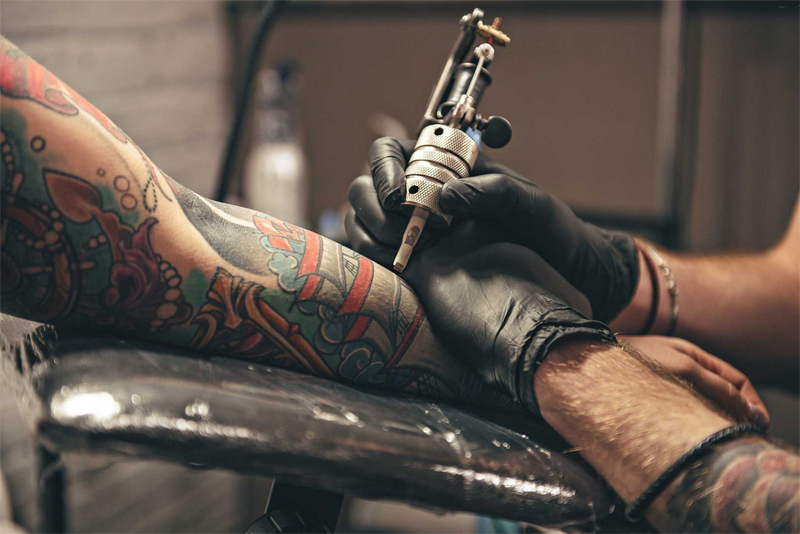 Permanent discoloration and inscriptions from pigment applied to the skin and then forced into the skin with needles. Many health-related risks are associated with unsanitary tattooing methods, including both localized infection and blood-borne illnesses such as hepatitis and HIV (human immunodeficiency virus). Today the preferred method of tattoo removal is laser surgery, which removes tattoos without scarring.
Permanent discoloration and inscriptions from pigment applied to the skin and then forced into the skin with needles. Many health-related risks are associated with unsanitary tattooing methods, including both localized infection and blood-borne illnesses such as hepatitis and HIV (human immunodeficiency virus). Today the preferred method of tattoo removal is laser surgery, which removes tattoos without scarring.
Permanent discoloration and inscriptions from pigment applied to the skin and then forced into the skin with needles. Tattoos are a form of body decoration drawn by professional artists who use electrically powered instruments to inject pigment into the skin. Other times tattoos are self-administered or drawn by amateurs with instruments such as pencils, pens, or needles using materials such as India ink or charcoal.
Apart from the fashion for body art, it has a therapeutic use in matching the colour of skin grafts. It is performed by implanting particles of colour pigment into the corium, the deeper layer of the skin, with a needle. The main medical hazard is infection, particularly hepatitis. The tattooed person may also become allergic to pigment, particularly cinnabar. Removal, which should be done by an aesthetic or plastic surgeon, always leaves a scar, and often needs to be followed by a skin graft. Removal is not allowed under the National Health Service unless there is some medical reason: for example, an allergic reactions. Other methods of removal are by cryosurgery, dermabrasion and laser surgery. These, too, must only be carried out under skilled medical supervision.
Indelible marking of the skin produced by introducing minute amounts of pigments into the skin. Tattooing is usually done to produce a certain design, picture, or name. When it is done commercially, sterile procedures may not be used and hepatitis B or C or HIV may be transmitted to the customer. The technique may also be used to conceal a corneal leukoma, to mask pigmented areas of skin, or to color skin to look like the areola in mammoplasty.
The implantation of enduring pigments beneath the skin’s surface is referred to as tattooing. This practice is employed to design artistic images on the skin for ornamental reasons or may be conducted for therapeutic purposes, such as recreating a nipple post breast surgery. However, tattooing, even when performed by professionals, carries inherent risks. In the absence of stringent sterile protocols, the needles used by tattooists can potentially transmit hepatitis and AIDS viruses.
Removing tattoos is generally a challenging process with limited success. Small tattoos can be excised through surgical means, while larger ones may occasionally be eliminated using techniques like dermabrasion or laser therapy.
The process of embedding plant and mineral pigments into the skin to create a design. Some who perform this craft might not be stringent with cleanliness, posing a risk of skin infections alongside the permanent design, which many individuals later come to regret. Tattoos can typically be removed solely through surgical means.
